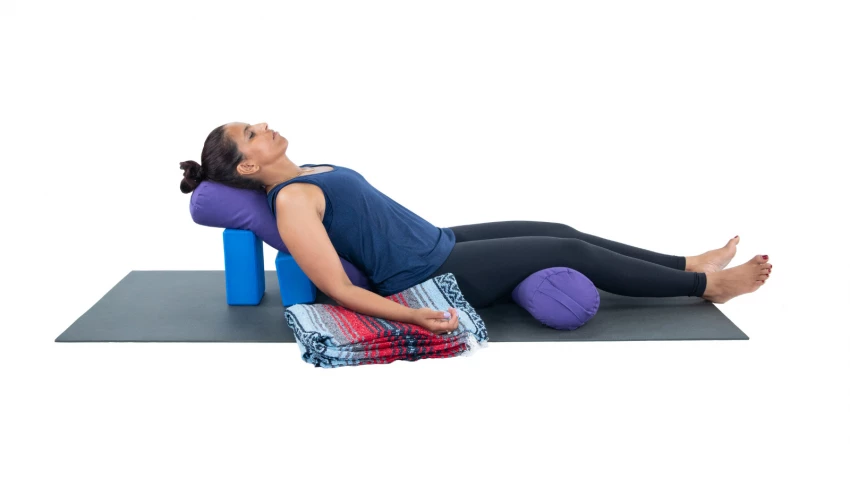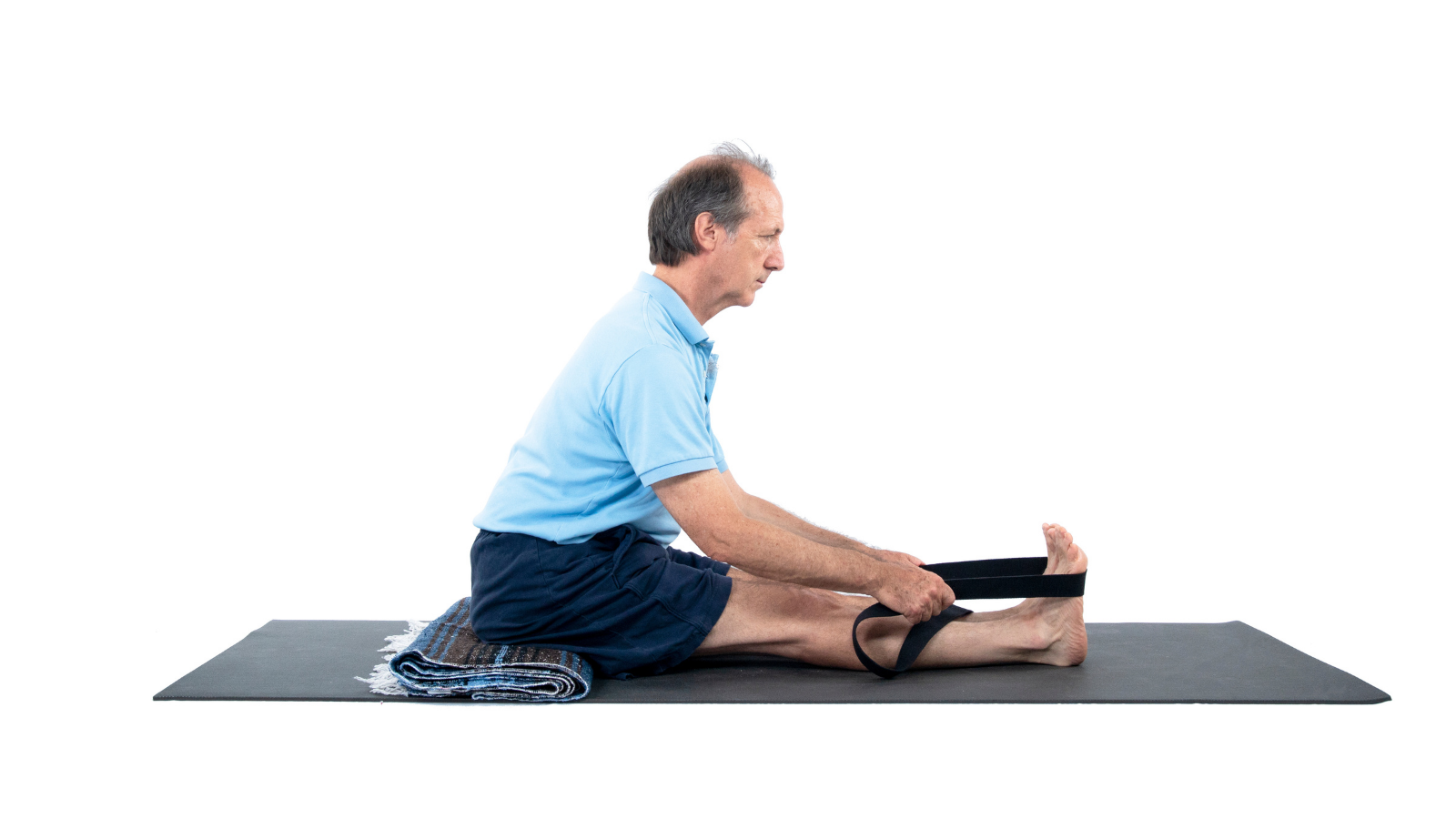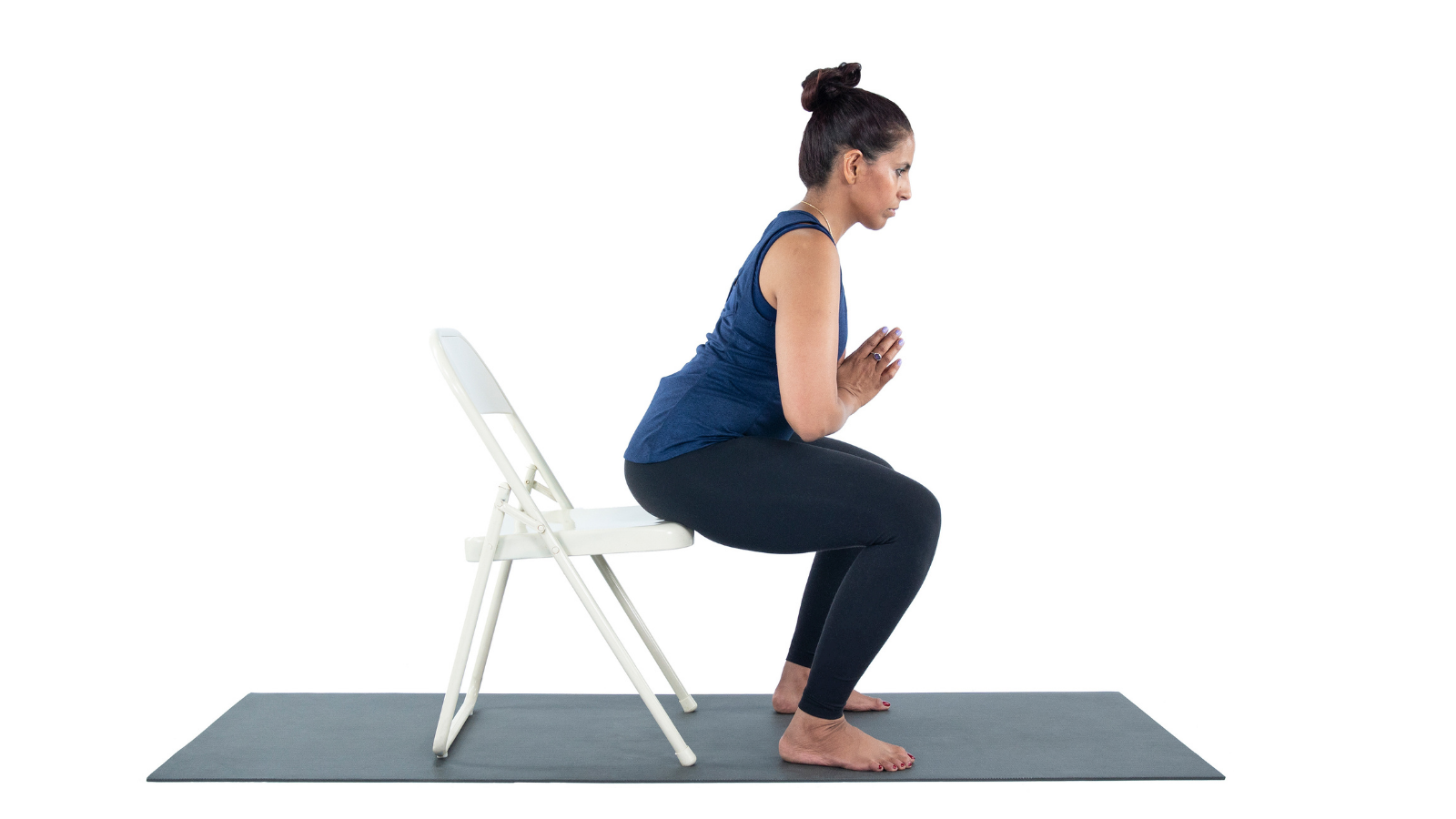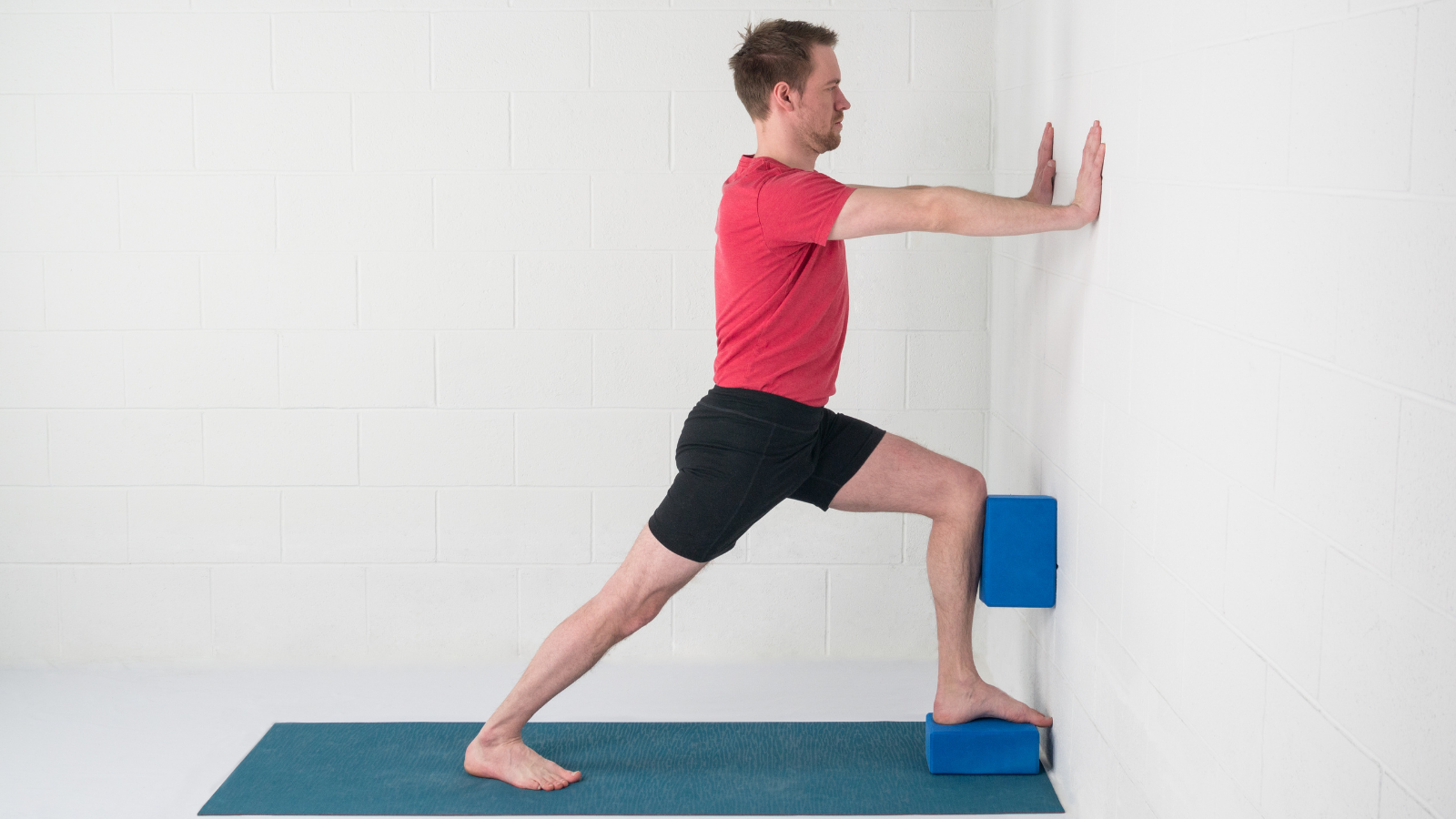Enhance Your Yoga Practice: The Many Benefits and Uses of Yoga Props

I hope you’re sitting down for this, although if you’re sitting in a chair instead of on the floor, you’re already using a prop. Most yoga teachers and practitioners believe that using yoga props makes yoga easier, and some consider using props to be a kind of a cop-out. I even saw a recent post on Facebook asking if using yoga mats is “cheating.” Exactly what we’re cheating at I’m not sure, but that question gave me pause.
So many of us are obsessed with practicing physically complicated poses in a rather egotistical and competitive way (which doesn’t sound much like yoga to me). Sure I love to challenge myself, but is that what yoga is about? Interestingly, against all logic, a well-respected survey of yoga research recently showed that the use of yoga props actually increased the risk of injury. You read that right, props increased injury. Isn’t that a surprise?
Can Using Yoga Props Really Cause Injuries? It Depends
According to Ann Swanson, MS, C-IAYT, LMT, author of Science of Yoga, “Contrary to what you may think, research suggests that using props in yoga (like a block or strap) doesn’t necessarily decrease your risk of injuries. (1) To prevent injury, avoid using props to push yourself further than your body allows. Instead, props can be used to make poses more accessible and easeful.”

This research seems to show that the use of yoga straps and blocks tends to push practitioners to go beyond their usual physical limitations in poses. It’s an interesting shift in the debate about props as a cop-out and seems to conflict with common conceptions about using props to make yoga more accessible. In a twisted way, our contemporary obsession with physically challenging asanas has made accessibility less accessible. We’ve taken tools that can make us safer and we’ve used them to put ourselves in danger.
How You Use Yoga Props Matters
As far as I’m concerned, props are an essential part of our practice. But, as with any other tool, the real issue is the way we use it. Props are neutral, but we can use them to make our practice more gentle, or we can use them to reach some kind of “advanced” variation of a pose.
The potential accessibility that props offer is what makes me love them so much. In my experience chairs, in particular, can make yoga accessible to so many people who either can’t or don’t want to get on the floor to practice. Chair yoga is a revolutionary approach to the practice that removes so much of the competitive and more dangerous aspects of asana practice.

Props, when used safely, offer tremendous benefit. Props can be an extension of our body, like a strap lengthening our arms or legs, or connecting one part of the body to another. Props can also lift the Earth to us as we ground down, like blocks that help us to reach the floor or support us when we want to release the tension of holding a pose. Props, like blankets and bolsters, can add pressure and weight to allow us to rest, giving our nervous system the extra signal it needs to down-regulate.

In the end, can you practice yoga without props? A yoga mat is a prop––probably created by the brilliant Angela Farmer because her palms didn’t sweat enough for her to have enough traction to stop slipping in Downward Facing Dog Pose (Adho Mukha Svanasana) when she was studying with BKS Iyengar. So she used a rug pad she got from her father’s rug factory. I hope she’s getting royalties!
Yoga Props Are All Around Us
Have we agreed that some props––like this strip of plastic we now call a yoga mat––can literally define yoga practice, while some others seem to detract from it in some way? What about the solid wood floor of most studios? Isn’t that a prop? If you have ever practiced on the beach, or in the grass, you know how different the hard floor is in offering resistance.
One of my favorite props is the wall. You’ll find one in almost every room! Usually, they’re free––you don’t have to order them from the yoga prop company. They offer so much support, not just for your ceiling, but for your body in asana. Have you tried balancing poses against a wall? One of my favorites is a Tree Pose (Vrksasana) with my back to the wall, and instead of raising my arms overhead, I keep my arms down and press my palms into the wall for support. It’s a very grounded Tree. (Image below is a Warrior 1 variation at the wall.)

The Yoga Props Within Us
I would also suggest that the body itself is a prop. One part of the body can be a prop for another part of the body, like the way I reach back and hold my ankle in King Dancer Pose (Natarajasana), or the way my arm becomes a fulcrum in a spinal twist. So many poses rely upon the body’s connection with itself. Mudras are another great example of this subtle connection of one part of the body with another.
You could even make the case that the body is the ultimate prop for your spirit. In fact, yoga philosophy basically describes the body as a temporary vehicle for the soul, a prop to support us through this lifetime. According to The Bhagavad Gita, “Just like casting off worn-out clothing and putting on new ones, that which is embodied casts off worn-out bodies and enters others that are new.” (Satchidananda 2.22)
Yoga is ultimately about our relationship with ourselves, it’s not about the approval of other people or our own competitive ego nature. To me, the most advanced yoga practitioner is the one who knows how to practice without injuring themselves––the one who can find a safe and effective practice. It seems like using props isn’t necessarily going to keep us safe, but then again, using a prop is, at times, exactly what some people need to stay safe in a pose.
The question is: How do you feel when you reach for a block in a public yoga class? If there is any stigma around prop usage, then we still have work to do. Just as we need to stop investing in the idea that more asana is better, we can also release the misunderstanding that using props is a sign of weakness.
Also, read...
Teaching Svadhyaya: 3 Ways to Encourage Self-Study in Yoga
In Celebration of Gray-Haired Yoga – Busting the Myth of the Yoga Body
Related courses

 Jivana Heyman, C-IAYT, E-RYT500, is the founder and director of the Accessible Yoga Association, an international non-profit organization dedicated to increasing access to the yoga teachings. Accessible Yoga offers Conferences, Community Forums, and a popular Ambassador program. He’s the co-founder of the Accessible Yoga Training School as well as the Accessible Yoga Podcast, and the author of Accessible Yoga: Poses and Practices for Every Body (Shambhala), as well as the forthcoming book, Yoga Revolution: Building a Practice of Courage & Compassion (Shambhala Nov. 2021). More info at jivanaheyman.com
Jivana Heyman, C-IAYT, E-RYT500, is the founder and director of the Accessible Yoga Association, an international non-profit organization dedicated to increasing access to the yoga teachings. Accessible Yoga offers Conferences, Community Forums, and a popular Ambassador program. He’s the co-founder of the Accessible Yoga Training School as well as the Accessible Yoga Podcast, and the author of Accessible Yoga: Poses and Practices for Every Body (Shambhala), as well as the forthcoming book, Yoga Revolution: Building a Practice of Courage & Compassion (Shambhala Nov. 2021). More info at jivanaheyman.com
Resources
- https://www.ncbi.nlm.nih.gov/pmc/articles/PMC6664709/



